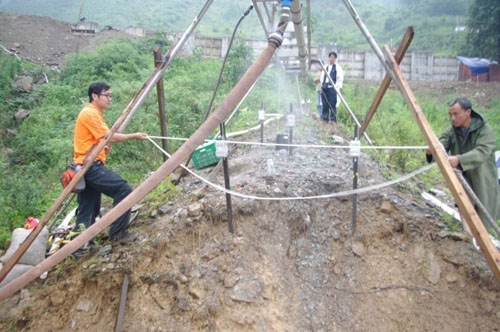Researcher QIAO Jianping and his group, from Institute of Mountain Hazards and Environment, Chinese Academy of Sciences (IMHE, CAS), carried out research on the distribution regulation of landslide induced by earthquake, failure model, hazard evaluation, monitoring and early warning and made some important progress by the three-year cooperation with University of Tokyo and Japan Central Development Co.Ltd. This research was supported by ‘Research on landslide hazard assessment for typical bank slopes after the Water Storage Period in the Three Gorges’, the key international cooperation project of the Ministry of Science and Technology of China.
Based on the research on formation condition of earthquake-induced landslide, disaster mechanism and disaster features, Sino-Japan Group took the "5.12" Wenchuan earthquake-stricken area as the research area and carried out a thorough study on landslide distribution regulation and hazard evaluation method. For the landslide distribution regulation, research group took lithology, structure, motion model and scale as the evaluation index, established data basic system and comprehensive classification model for earth-induced landslide, and built up the base failure mode for transient and hysteresis landslide by use of ratio analysis method, furthermore, they had studied on the relation between distribution and intensity of landslide and scale, duration, attenuation acceleration and the maximum distance from epicenter, the theoretic model for the landslide change with maximum distance from epicenter had been established. For the earthquake-induced landslide hazard evaluation, QIAO’s group established basic method for hazard evaluation and zoning of earthquake-induced landslide by use of the contributing weight stack method. The research outcome provides important scientific support for earthquake-induced landslide disaster mitigation and post-earthquake recovery and reconstruction of China.

Qiao's group developed research in field. (by IMHE)
